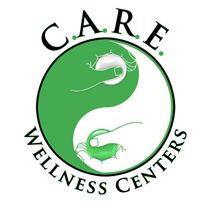
By Dr. Adam J. Friedman – Margate / Coconut Creek Florida – As I approach my first holiday season here in South Florida, I can already see the increase of traffic in our local streets and expressways. Since I have been doing a great deal of cross-county driving, I’ve unfortunately seen my share of fender-benders – as well as some pretty serious accidents. While no one leaves their home planning to be in a car accident, the reality is that life happens.
Whiplash is an injury to your neck muscles caused by a rapid forward and backward motion of the neck caused by trauma. Even a minor car accident can cause acute neck pain as well as restricted movement in your neck. Many people involved in motor vehicle accidents develop symptoms of whiplash some two to forty-eight hours AFTER the injury.
Of course, motor vehicles accidents are not the sole cause of whiplash; whiplash can occur when an individual falls, gets injured playing any number of sports or from other incidents.
Patients with whiplash injury may complain of pain and stiffness in the neck, sometimes extending into the shoulders and arms, upper back and even the upper chest. Some patients suffer with headaches, especially at the base of the skull while others may experience dizziness, difficulty swallowing, nausea and even blurred vision after injury, but these symptoms tend to resolve quickly.
As a chiropractor, I evaluate your total spine – even if what brings you through the office door is neck pain. The body is an incredible, complex machine. Just because a person suffers from neck pain does not mean that other regions in your body are unaffected. It’s important for you to remember that chiropractors look at the total person – not just the painful problem. Neck pain is unique to each person and because of this, I don’t just focus on your neck.
Chiropractic Treatments and your Personalized Treatment Plan
Your specific treatment plan will depend on the severity of your whiplash injury. A variety of spinal manipulation techniques are commonly used, including flexion-distraction technique, instrument- assisted manipulation and specific spinal manipulation. In addition to spinal manipulations, I may use manual therapy to treat injured soft tissues – such as ligaments and muscles. Again, depending upon your injury, manual therapies may include instrument-assisted soft tissue therapy, manual joint stretching and resistance techniques, therapeutic massage and trigger point therapy.
For those of you who panicking from just reading these terms, here are the specifics:
- Flexion-distraction technique: This hands-on technique is a gentle, non-thrusting type of spinal manipulation to help treat herniated disks with or without arm pain. Your whiplash injury may have aggravated a bulging or herniated disc. The chiropractor uses a slow pumping action on the disc instead of direct force to the spine.
- Instrument-assisted manipulation: This technique is another non-thrusting technique chiropractors often use. Using a specialized hand-held instrument, the chiropractor applies force without thrusting into the spine. This type of manipulation is useful for older patients who have a degenerative joint syndrome.
- Specific spinal manipulation: The chiropractor identifies spinal joints that are restricted or show abnormal motion (called subluxations). Using this technique, he or she will help restore motion to the joint with a gentle thrusting technique. This gentle thrusting stretches soft tissue and stimulates the nervous system to restore normal motion to the spine.
In addition to spinal manipulation, a chiropractor may also use manual therapy to treat injured soft tissues (eg, ligaments and muscles). Some examples of manual therapies your chiropractor may use are:
- Instrument-assisted soft tissue therapy: Your chiropractor may use the Graston technique, which is an instrument-assisted technique used to treat injured soft tissues. He or she will perform gentle repeated strokes using the instrument over the injured area.
- Manual joint stretching and resistance techniques: An example of a manual joint therapy is muscle energy therapy.
- Therapeutic massage: The chiropractor may perform therapeutic massage to ease muscle tension in your neck.
- Trigger point therapy: Your chiropractor will identify specific hypertonic (tight), painful points of a muscle by putting direct pressure (using his or her fingers) on these specific points to alleviate muscle tension.
Depending on your injury, there are other therapies I can use to help reduce neck inflammation caused by whiplash. Examples of other therapies include:
- Interferential electrical stimulation: This technique uses a low frequency electrical current to help stimulate muscles, which can ultimately reduce inflammation.
- Ultrasound: By increasing blood circulation, ultrasound can help decrease muscle spasms, stiffness, and pain in your neck. Ultrasound does this by sending sound waves deep into muscle tissues. This creates a gentle heat that increases circulation.
Communication is Key to Successful Treatment
Since communication between my patients and myself is essential, I will explain each procedure to the patient. It’s important for you to be honest with me, both about your pain as well as your fears about any procedure. Only then can we develop an effective treatment plan.
During your exam I will need to touch and move your head, neck and arms. I’ll ask you to move and to perform simple tasks so that I can determine your range of motion in your neck and shoulders and the degree of motion that either causes you pain or increases pain. I’ll ask you to identify any tenderness in your neck, shoulders or back and I will evaluate your reflexes as well as the strength and sensation in your limbs.
There are stages to whiplash treatment; throughout each stage, your body needs to heal, and for it to heal, you need to rest. Treatment for each person is as different as their type of injury, but there is one constant; rehabilitative exercises done in the office and at home dramatically increase the potential of your full recovery. Home recommendations include proper computer and telephone ergonomics, range-of-motion exercises and the use of ice and heat.
Any treatment plan that does not include teaching the patient how to help themselves is incomplete, as is any treatment plan that doesn’t included possible nutritional counseling. The more a patient knows about how to stretch, how to use ice or heat on an injury as well as the how and why of rehabilitative exercise and any possible daily living modifications, the better the outcome is for the patient’ faster and more complete recovery.
And I am cheering for your complete recovery!
“Get Healthy, Stay HEALTHY!”
